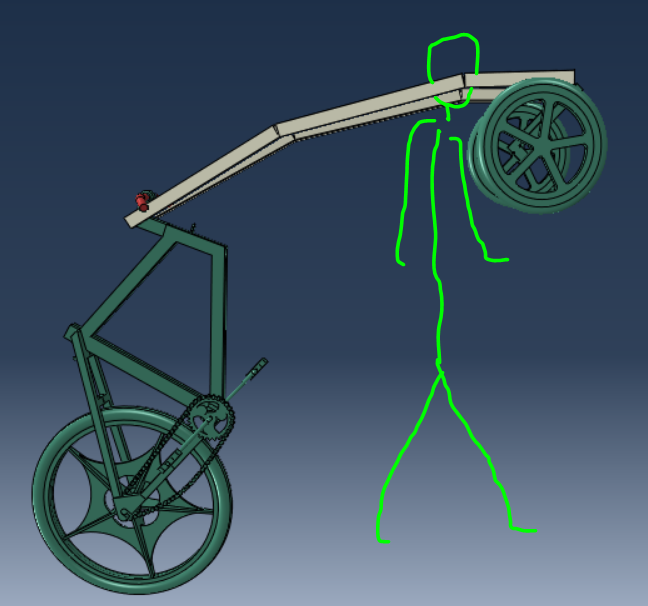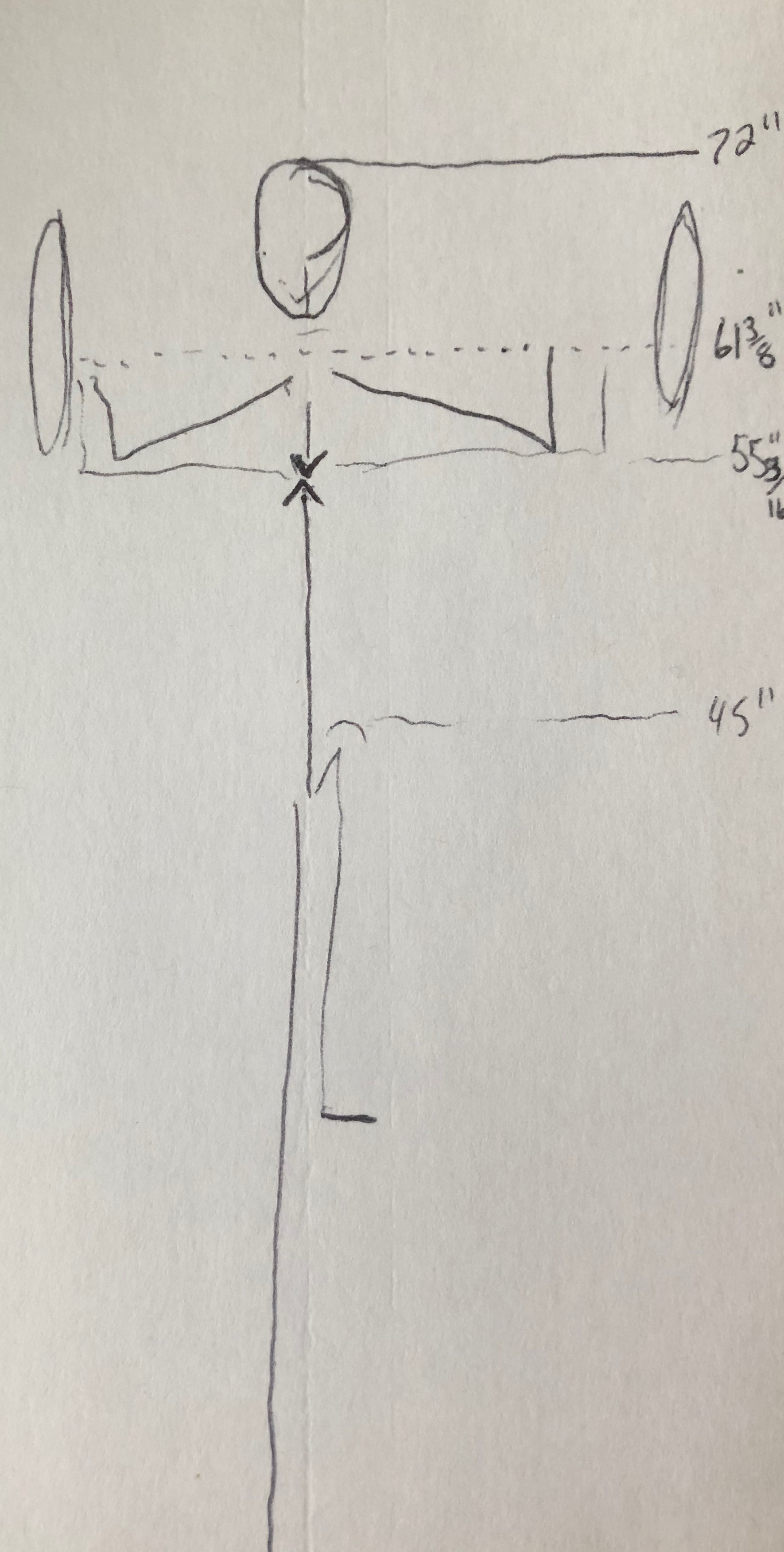-
Putting Ideas on "Paper"
04/05/2019 at 02:57 • 1 commentI'd like to be able to do this when needing to cross uncertain terrain or unsafe roadways on foot-
Form Overview Video:
-
Research R1: Prone Human Powered Vehicles
04/04/2019 at 00:17 • 0 commentsResearching Human Powered Vehicles in the prone position:
I claim and "would like" to do many things mentioned below. What excites me in the prototyping process is the flexibility one requires to initially sacrifice design goals and rediscover clever ways to achieve them that initially were not apparent.
FRAME FORMS- A nice image gallery (see #2)-
http://www.geocities.ws/rcgilmore3/prone.htm
#2 represents closest the stance I'd like to achieve. It fails to alleviate neck strain and the safety of being tall enough for cars to see. I'm very curious to see how it steers.
WHEEL ASPECT RATIO-
With what is on hand (old bicycles and unused children's towable cart), I will wind up with a wheel aspect ratio looking like this (~24" OD on rear wheel, and ~15.5" OD on front wheels):
https://www.pinterest.com/pin/711920653569630021/
FAIRING FORMS-
I'd like to simultaneously gain elevation for safety and add a vertical stabilizer(s) to aid in tracking. I feel that many videos of prone bicycles have shown instabilities that would benefit from a vertical stabilizer. This would be one which protrudes to the average height of a driver in a sedan (perhaps 4ft; made from honeycomb core). I like the stabilizer shape on fighter jets such as the JAS 39 Gripen:
https://en.wikipedia.org/wiki/Saab_JAS_39_Gripen
PORTABILITY-
I have no goals relating to length for ease of transport or collapsibility. I'm focusing on comfort, safety, and efficiency. A more clever origami artist can comment to the eventual prototype that comes of this. I would like to explore leaving the rear tire behind the pedals as in a traditional bicycle. This will make for a long vehicle (>9' in my case of 6' height with fairing extending beyond my head in the front)
COMFORT-
I would like to have a single tube which serves to suspend the rider from points that do not restrict breathing or movement. This will likely come in the form of a harness similar to hang-glider harnesses attached to the over-arching tube. The tube will also support the fairing, and likely look like a spine with a human trapped in a rib cage (with one pair of ribs going down to the lower frame (below the hinge-point).
SAFETY-
(see fairing forms). Aside from being visible. The plan is to have the face pointed at the ground. Parascope style solutions will be explored in the next research session.
STEERING (see image)-
I would like to utilize a point about 1/3 of the way up the sternum (@55 3/16" along 72" body) as the hinge-point for steering. This will place the elbows comfortably bent to brace the cross tube (running right under the chin; @61 3/8").
![Preliminary Elevations along Body Preliminary Elevations along Body]()
72" human

